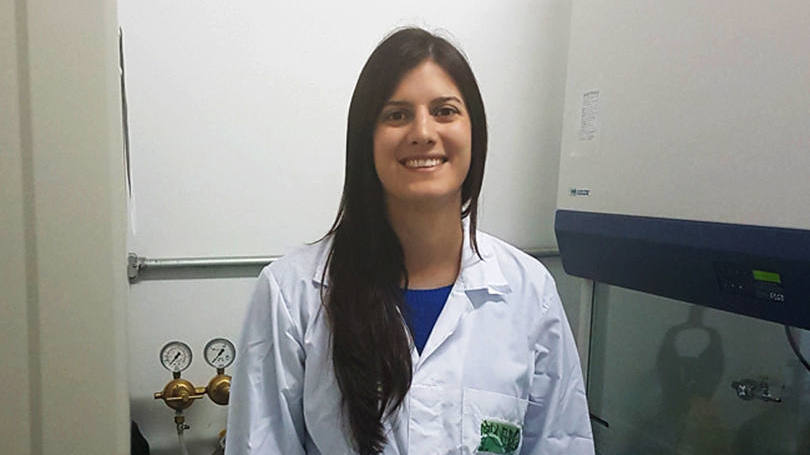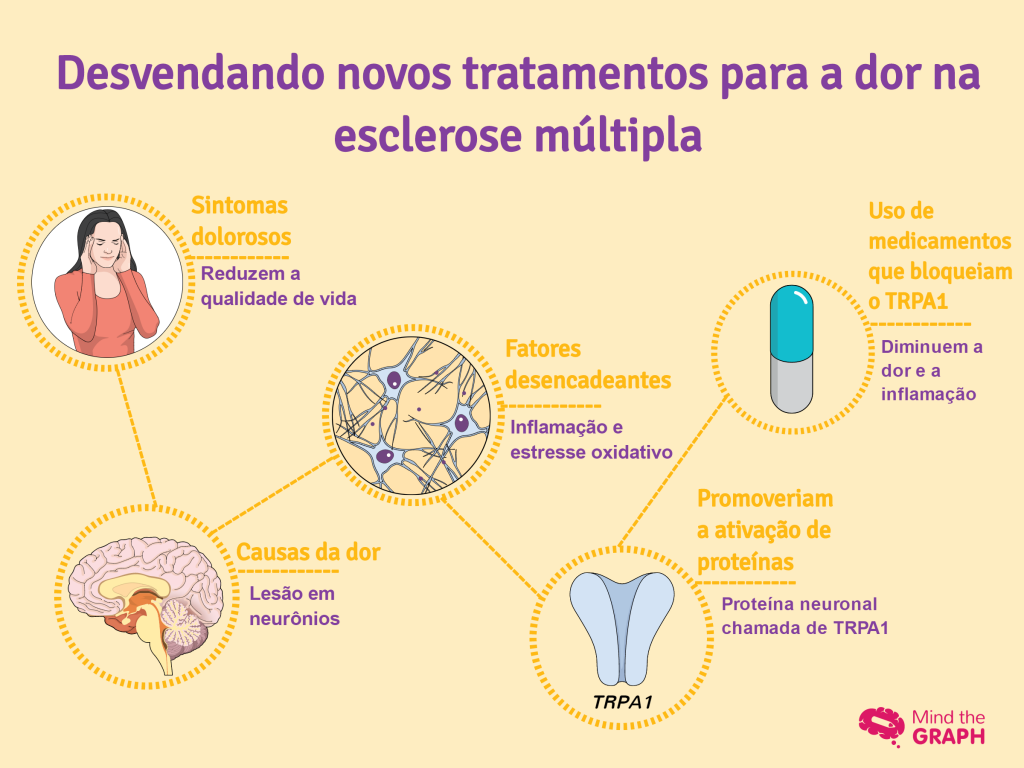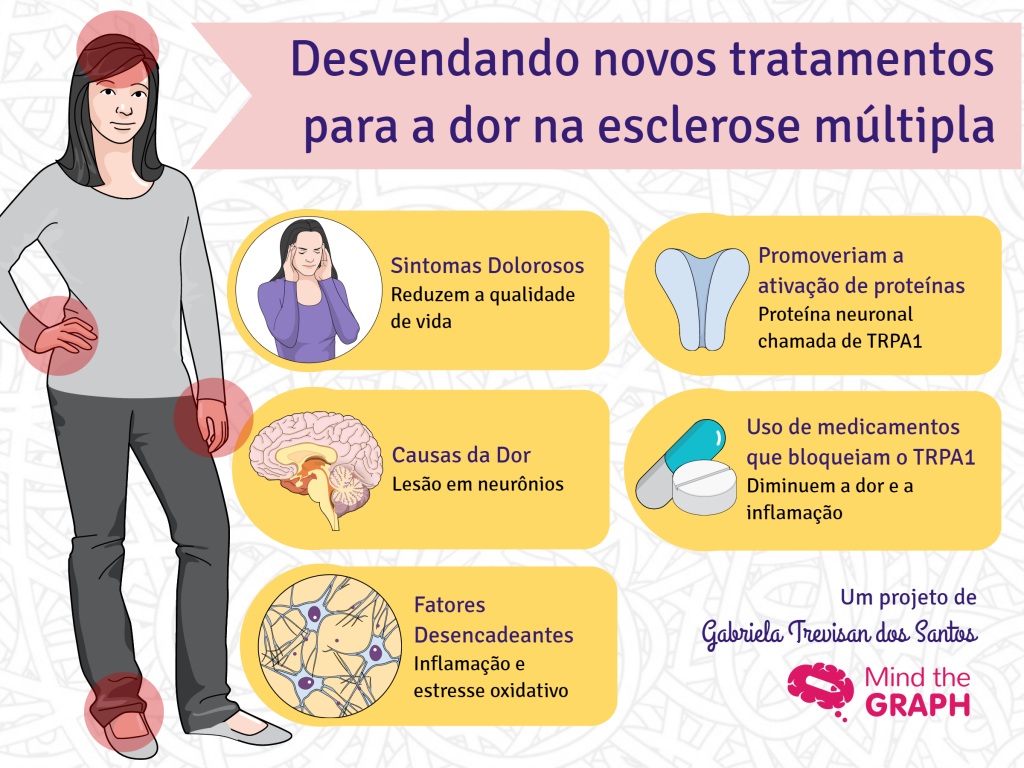Post doctor in Biological Sciences, Gabriela Trevisan is especialized in pain and inflammatory processes. Her research aimes to change the way we look at multiple sclerosis symptoms and pain killers. However, the reason she studies this field goes a little beyond science.
Gabriela’s mother – Claudia Trevisan – suffers from multiple sclerosis. To understand better what her mother is going through, Gabriela challenge herself to study a poorly known field in science and answer the questions about Claudia’s disease.

Gabriela hypothesized that the protein TRPA1 may be related to pain in multiple sclerosis. To test it, Gabriela is using mice that cannot feel pain since they have a gene deletion to the TRPA1 receptor.
Her experiment consists in applying free radicals in the mice and see if the TRPA1 will get activated. If it gets activated, it means TRPA1 is related to multiple sclerosis symptoms.
If Gabriela is right, the way we treat multiple screrosis symptoms will change drastically. For instanc, the current treatment using morfine – a highly addictive drug – would be substituted by a softer drug more effective to TRPA1, such as dipirone.
Apart from the outstanding research, Gabriela’s work is the subject of the Exame magazine this week. Together with six other female researchers, Gabriela won the “To Women in Science” award. L’Oreal, Unesco and the Brazilian Academia of Science awarded each of them with a 50 thousand reais – close to 16 thousand dollars – scholarship to continue their work.
It is a fare amount of money for such brilliant studies. However, not all researchers will have the same opportunity. Gabriela points out that most investments for scientific studies in Brazil comes from the brazilian governament. In her opinion, the industry should also be part of science progress and dialogue with science to think together about new discoveries.
To explain a little bit of her research in a more visual way, Gabriela made the following graphical abstract:
“I use Mind the Graph as a new way to interact with scientific research and science!
It is easy and fast to create infographics and figures that communicate with other researchers and the general public. Since I had no knowledge of graphic softwares, I always found it difficult to create my own figures. As soon as I had the opportunity to use Mind the Graph, I realized it all could be very easy and fast.
Developing a research can be complicated, but we must try to communicate with other people to exchange ideas. Also, we should try to explain what we do in only a few words.
The platform brings infographic models and illustrations that speeds up the process of building your own infographic. I surely will keep using Mind the Graph for my upcoming projects and presentations!” – Gabriela Trevisan
And here is the graphical abstract we made about her work:
The usage of visual stimuli in science is getting more popular each day. The goal is simple: to help people understand a certain subject. You can learn more about it reading our post “Want to get published? Do something different!”.

Subscribe to our newsletter
Exclusive high quality content about effective visual
communication in science.







